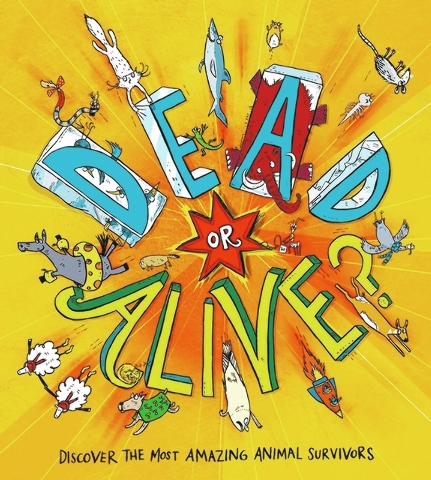Animal kingdom’s survival instincts are on display in ‘Dead or Alive?’

Lately, you’ve been fighting a lot with your brother.
Sometimes, he makes you mad, though, and you just can’t help it! So you yell, and he yells, and pretty soon, there’s a war that makes your mother crazy.
Even though you fight with your brother, you still love him. And nothing dangerous happens, unlike with the creatures in the new book “Dead or Alive?” by Clive Gifford, illustrated by Sarah Horne.
When an animal in the wild gets hungry, there aren’t a lot of options. It’s not like they can go to the grocery store, right? No, they have to catch their supper, and while nature’s given some of them speed and claws to do that efficiently, potential meals have a few tricks on their side, too.
Take, for instance, opossums and hognose snakes.
When opossums and hognoses are threatened with becoming snacks, they act dead, they smell dead, they look dead and are very unappetizing to predators. That allows them to live (and play dead) another day.
On the other hand, though, what about those critters that gotta eat?
They can pretend to be rocks, like an alligator snapping turtle, and lure their lunches straight to their mouths. Or, like anglerfish, they might use bioluminescence to invite other creatures to dinner. Or, like orange barnacles, they could just turn their prey into zombies and wait until snacktime.
For other animals, matters of life and death are a little more unusual.
Mayflies have mouths, but they don’t use them because mayflies “don’t live long enough to get hungry.” Scientists think there’s a possibility that the Antarctic volcano sponge might live for up to 10,000 years! A 4-month-old puppy in England accidentally got flushed down the toilet and survived, and a cat in Boston fell 19 stories and lived. Extinct animals have been discovered alive (no dinosaurs yet, but still…) and scientists are trying to figure out how to bring other animals back from extinction. And if you ever happen to find yourself on walkabout with an Aboriginal person in the middle of Australia, bring lots of water.
Your second option isn’t so tasty…
Anybody can spout information about cats and dogs. Many kids know things about horses and cows. But who knows about tardigrades and thylacines? Your child, that’s who, once he’s got “Dead or Alive?” in his hands.
Inside this book, there are creatures that crawl, walk, run — and are eaten. There are animals that fly, swim, wiggle — and are hunters. And, of course, Gifford includes critters that have uniquely adapted to survive in ways that your child will find fascinating, maybe a little icky. And if icky isn’t enough, there’s fun to be had in Horne’s colorful, informative, but cartoon-like illustrations, too.
This book is perfect for kids ages 7 to 12, and I think even adults could learn a thing or two by paging through it. If you’ve got a young biologist or animal lover around, look for it. Getting him to read “Dead or Alive?” shouldn’t be much of a fight.
View publishes Terri Schlichenmeyer’s reviews of books for children and teens weekly.